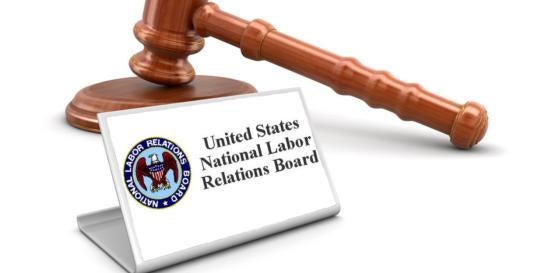The National Labor Relations Board (“NLRB”) recently adopted a Final Rule regarding representation-case procedures (“2023 Rule”). The 2023 Rule substantially rescinds the 2019 amendments to the representation-case procedures (“2019 Rule”), and returns to the 2014 procedures (“2014 Rule”). The 2023 Rule is effective for all representation case petitions filed on or after December 26, 2023.
Often dubbed the “ambush” election rule, the 2014 Rule—and now the 2023 Rule— significantly shorten the time between when a petition is filed and the election itself. This condensed window makes it challenging for employers to educate voters about unionization prior to the vote. While NLRB Chairman Lauren McFerran touted the 2023 Rule as a victory to support quick resolution of representation cases by removing unnecessary delays, NLRB member Marvin Kaplan disagreed. In his dissent, Kaplan warned that speed is not more important than any other consideration, and argued that the new pace could have a negative effect on employees who may not have enough time to fully consider their vote.
As outlined below, the 2023 rules implement 10 key changes to the representation election process. The new rules take effect for any petition filed after December 26, 2023.
Key Changes Based on the 2023 Rules:
- The pre-election hearing will be scheduled approximately 10 days quicker. Under the 2019 Rule, a pre-election hearing would generally be scheduled 14 business days after service of the Notice of Hearing. Under the 2023 Rule, a pre-election hearing will be scheduled 8 calendar days from service of the Notice of Hearing.
- Less discretion for regional directors in pre-election hearing postponements. Under the 2019 Rule, a regional director could postpone a pre-election hearing for an unlimited amount of time based on good cause. Under the 2023 Rule, the Regional Director’s postponement discretion is limited to only 2 business days.
- Non-petitioning parties (often the employer) have 3-less days to file a Statement of Position. Under the 2019 Rule, a non-petitioning party’s Statement of Position was due 10 calendar days after service of the Notice of Hearing. The 2023 Rule shortens this timeframe to 7 calendar days after service of the Notice of Hearing.
- Less discretion for regional directors in postponing Statement of Position due dates. Under the 2019 Rule, a regional director was free to grant any postponement based on a good cause showing. The 2023 Rule allows only for a 2-business day extension based on a showing of special circumstances. A greater than 2-business day extension can be granted based only on extraordinary circumstances.
- Extending the time for the petitioner’s response to the non-petitioning party’s Statement of Position and eliminating the requirement of a written response. Under the 2019 Rule, a petitioner had to respond to the non-petitioning party’s Statement of Position, in writing, 3 business days in advance of the hearing. Under the 2023 Rule, the petitioner’s response is oral and on the day hearing opens.
- Shortening an employer’s timeframe to comply with Notice Posting requirements by 3-days. Under the 2019 Rule, an employer had 5 business days from the Notice of Hearing to post the Notice of Petition for Election in the workplace. Under the 2023 Rule, an employer only has 2 business days to comply with these posting requirements.
- Inability to litigate disputes concerning individuals’ eligibility to vote or inclusion in an appropriate unit. Under the 2019 Rule, individual eligibility and inclusion questions were normally litigated at the pre-election hearing and resolved by the regional director prior to election. Under the new rules, such issues are generally not to be litigated.
- Eliminating the parties right to file post-hearing briefs. Under the 2019 Rule, parties were entitled to file briefs up to 5 business days after conclusion of a pre- or post-election hearing. Under the 2023 Rule, the parties have no right to file a post-hearing brief, and may only do so with special permission from the regional director or hearing officer.
- Specification of the Election Details in the Decision and Direction of Election. Under the 2019 rules, a regional director had the discretion to set and convey the election details later in the election process. However, under the new rules, regional directors must ordinarily simultaneously transmit the election details along with the Decision and Direction of Election.
- Fast-track elections by removing the 20-business day waiting period. The 2019 Rule imposed a 20-business day waiting period between the Decision and Direction of Election and the election itself. The new rules eliminate this waiting period, and require the election is scheduled for the “earliest date practicable” after issuance of the Decision and Direction of Election.
Employers should be aware of these new procedures, and the real possibility of facing an ambush election in 2024. Employers should consider creating representation election playbooks, with the guidance of experienced labor counsel which provide step-by-step plans ready for deployment upon receipt of signs of organizing, a demand for recognition or an election petition. We believe the 2023 Rule is designed to create an unequal playing field and implicates due process issues for employers. While we anticipate legal challenges to the Rule, these challenges can take time, and there is no guarantee that such challenges will be successful. We will continue monitoring developments regarding the NLRB representation election procedures and cases.





 i
i


